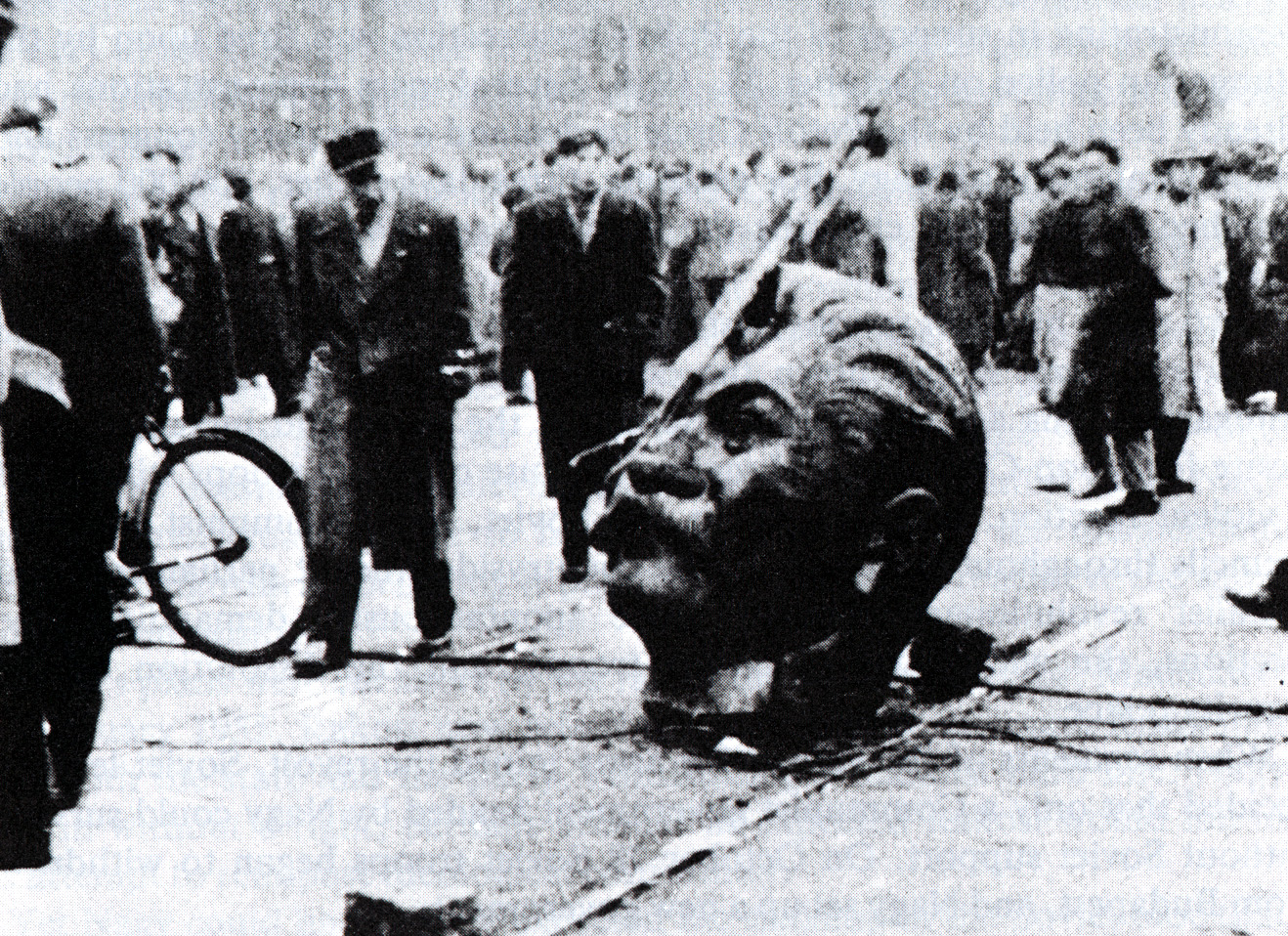

This striking photo of Stalin's head in the aftermath of the anti-Soviet
uprising in Hungary in October 1956 underlies a key historical debate over
whether or not communism ever had popular support in Eastern Europe.
Hugh Seton- Watson portrays the imposition of communist control in the
region solely as the result of Soviet aggression and expansion, whereas
Geoffrey Swain argues it was a combination of communism's popularity in
postwar Eastern Europe and the imposition of Soviet control. According
to Swain, however, communism lost popularity in the region during the Cold
War because of Soviet occupation and economic problems, especially shortages
of consumer goods. The Cold War period is marked by a number of major
uprisings in Eastern Europe against Soviet control, the most serious being
in Hungary and Czechoslovakia. In Budapest a huge statue of Soviet
leader Josef Stalin was toppled by demonstrators and dragged two miles
to the center of the city, where it was broken apart by souvenir hunters.
Stalin had been denounced by new Soviet leader Nikita Khrushchev at the
Twentieth Congress of the Communist Party only months before, in February
1956, which set off a wave of protests in Poland and Hungary, culminating
with an invasion by Red Army troops. A similar fate awaited Czechoslovakia
during the "Prague Spring" twelve years later, in 1968.